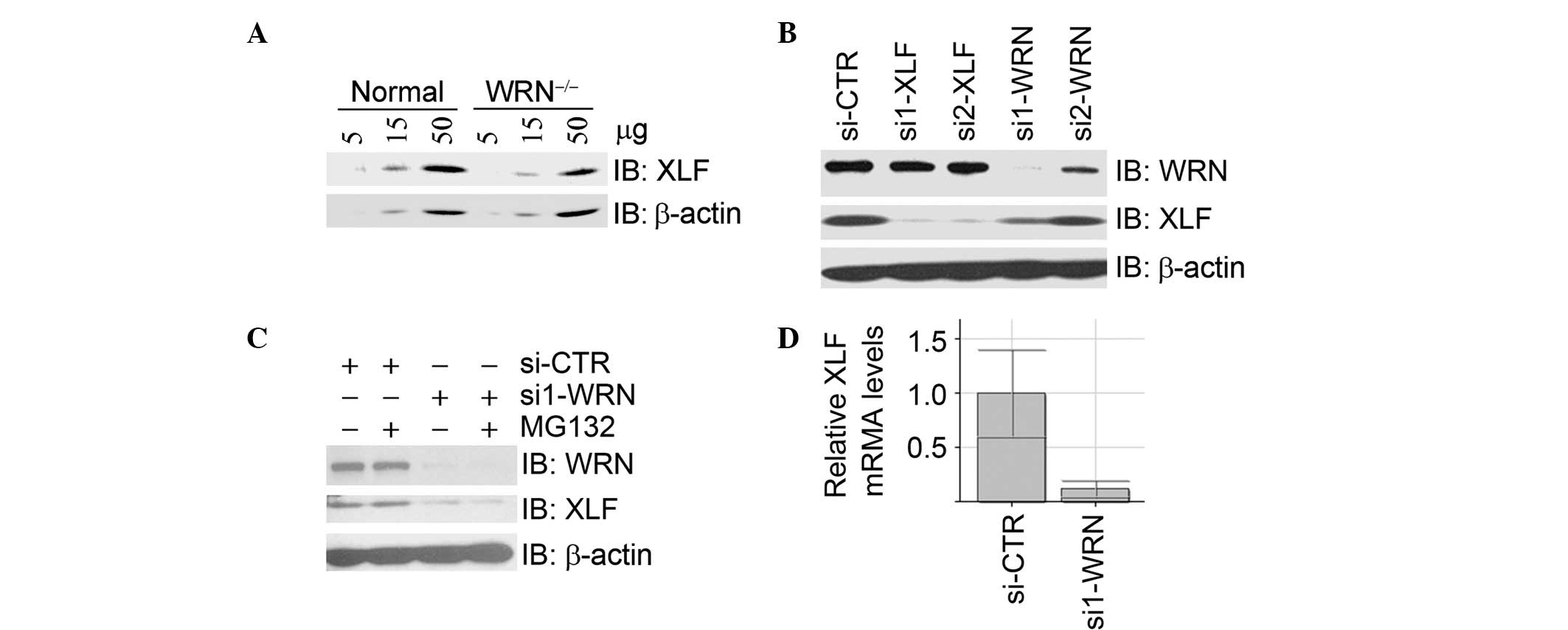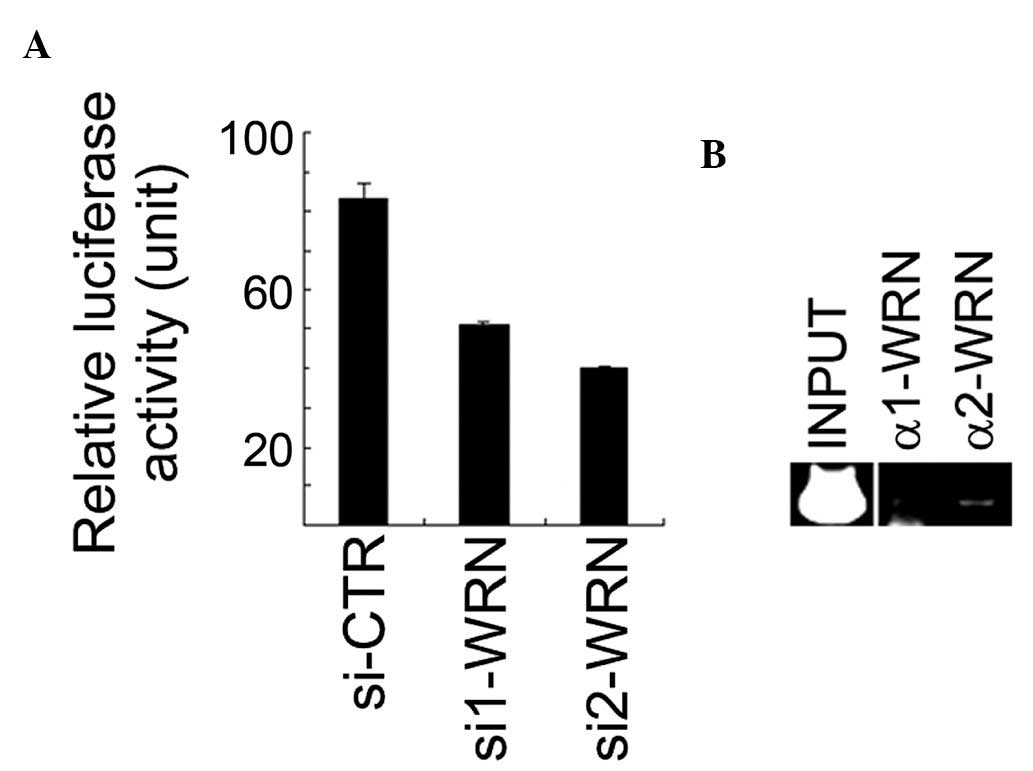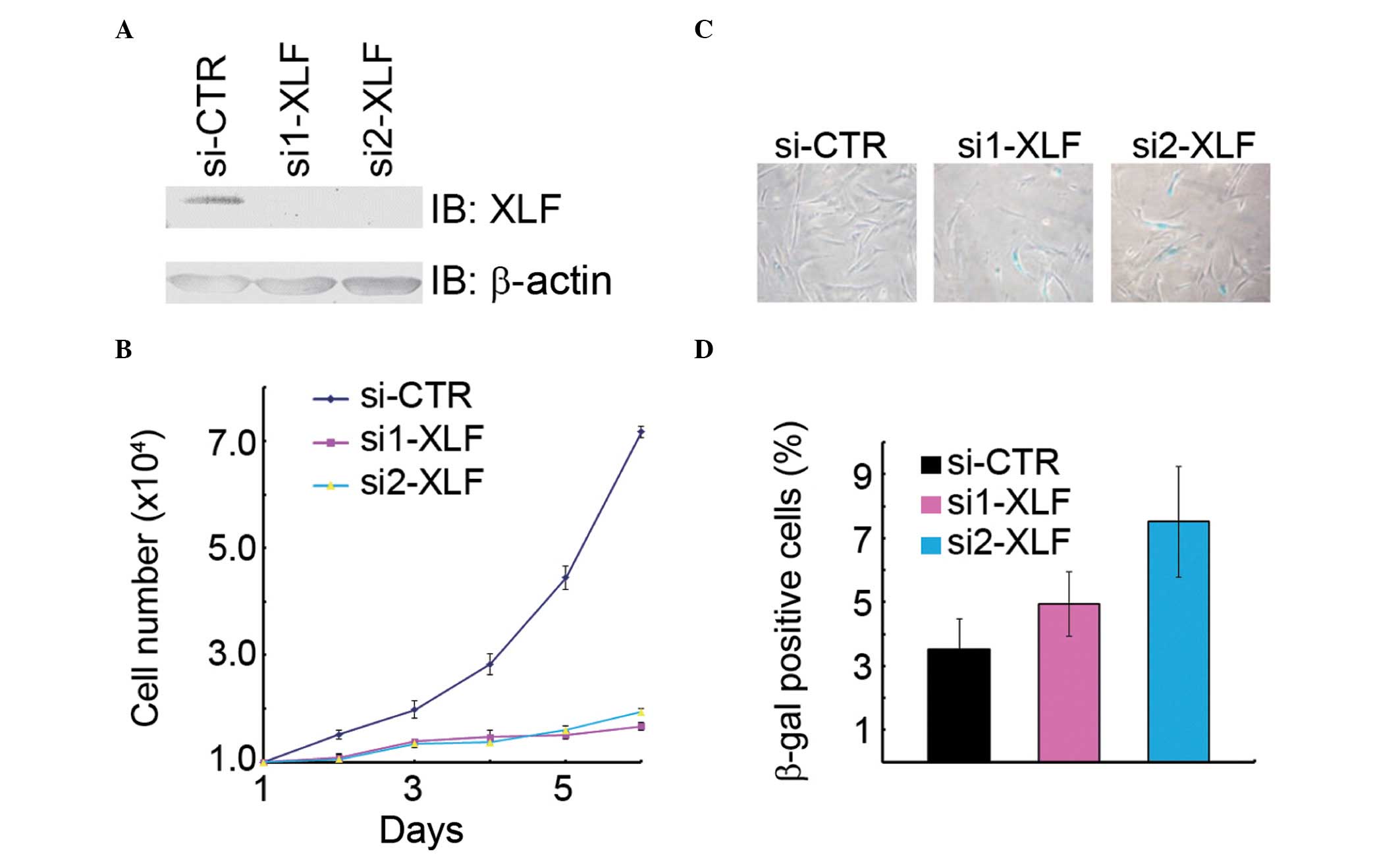|
1
|
Jackson SP: Sensing and repairing DNA
double-strand breaks. Carcinogenesis. 23:687–696. 2002. View Article : Google Scholar : PubMed/NCBI
|
|
2
|
Ciccia A and Elledge SJ: The DNA damage
response: making it safe to play with knives. Mol Cell. 40:179–204.
2010. View Article : Google Scholar : PubMed/NCBI
|
|
3
|
Hanahan D and Weinberg RA: Hallmarks of
cancer: the next generation. Cell. 144:646–674. 2011. View Article : Google Scholar : PubMed/NCBI
|
|
4
|
Lees-Miller SP and Meek K: Repair of DNA
double strand breaks by non-homologous end joining. Biochimie.
85:1161–1173. 2003. View Article : Google Scholar : PubMed/NCBI
|
|
5
|
Mladenov E and Iliakis G: Induction and
repair of DNA double strand breaks: the increasing spectrum of
non-homologous end joining pathways. Mutat Res. 711:61–72. 2011.
View Article : Google Scholar : PubMed/NCBI
|
|
6
|
Buck D, Malivert L, de Chasseval R, et al:
Cernunnos, a novel nonhomologous end-joining factor, is mutated in
human immunodeficiency with microcephaly. Cell. 124:287–299. 2006.
View Article : Google Scholar : PubMed/NCBI
|
|
7
|
Ahnesorg P, Smith P and Jackson SP: XLF
interacts with the XRCC4-DNA ligase IV complex to promote DNA
nonhomologous end-joining. Cell. 124:301–313. 2006. View Article : Google Scholar : PubMed/NCBI
|
|
8
|
Yano K, Morotomi-Yano K, Wang SY, et al:
Ku recruits XLF to DNA double-strand breaks. EMBO Rep. 9:91–96.
2008. View Article : Google Scholar : PubMed/NCBI
|
|
9
|
Yano K and Chen DJ: Live cell imaging of
XLF and XRCC4 reveals a novel view of protein assembly in the
non-homologous end-joining pathway. Cell Cycle. 7:1321–1325. 2008.
View Article : Google Scholar : PubMed/NCBI
|
|
10
|
Hasty P: Is NHEJ a tumor suppressor or an
aging suppressor? Cell Cycle. 7:1139–1145. 2008. View Article : Google Scholar : PubMed/NCBI
|
|
11
|
Li H, Vogel H, Holcomb VB, Gu Y and Hasty
P: Deletion of Ku70, Ku80, or both causes early aging without
substantially increased cancer. Mol Cell Biol. 27:8205–8214. 2007.
View Article : Google Scholar : PubMed/NCBI
|
|
12
|
Zha S, Alt FW, Cheng HL, Brush JW and Li
G: Defective DNA repair and increased genomic instability in
Cernunnos-XLF-deficient murine ES cells. Proc Natl Acad Sci USA.
104:4518–4523. 2007. View Article : Google Scholar : PubMed/NCBI
|
|
13
|
Martin GM, Austad SN and Johnson TE:
Genetic analysis of ageing: role of oxidative damage and
environmental stresses. Nat Genet. 13:25–34. 1996. View Article : Google Scholar : PubMed/NCBI
|
|
14
|
Gray MD, Shen JC, Kamath-Loeb AS, et al:
The Werner syndrome protein is a DNA helicase. Nat Genet.
17:100–103. 1997. View Article : Google Scholar : PubMed/NCBI
|
|
15
|
Huang S, Li B, Gray MD, Oshima J, Mian IS
and Campisi J: The premature ageing syndrome protein, WRN, is a
3′-->5′ exonuclease. Nat Genet. 20:114–116. 1998.
|
|
16
|
Luo J: WRN protein and Werner syndrome. N
Am J Med Sci (Boston). 3:205–207. 2010. View Article : Google Scholar : PubMed/NCBI
|
|
17
|
Li B and Comai L: Functional interaction
between Ku and the werner syndrome protein in DNA end processing. J
Biol Chem. 275:398002000.PubMed/NCBI
|
|
18
|
Yannone SM, Roy S, Chan DW, et al: Werner
syndrome protein is regulated and phosphorylated by DNA-dependent
protein kinase. J Biol Chem. 276:38242–38248. 2001.PubMed/NCBI
|
|
19
|
Li B and Comai L: Displacement of DNA-PKcs
from DNA ends by the Werner syndrome protein. Nucleic Acids Res.
30:3653–3661. 2002. View Article : Google Scholar : PubMed/NCBI
|
|
20
|
Otsuki M, Seki M, Kawabe Y, et al: WRN
counteracts the NHEJ pathway upon camptothecin exposure. Biochem
Biophys Res Commun. 355:477–482. 2007. View Article : Google Scholar : PubMed/NCBI
|
|
21
|
Kusumoto R, Dawut L, Marchetti C, et al:
Werner protein cooperates with the XRCC4-DNA ligase IV complex in
end-processing. Biochemistry. 47:7548–7556. 2008. View Article : Google Scholar : PubMed/NCBI
|
|
22
|
Shiratori M, Suzuki T, Itoh C, Goto M,
Furuichi Y and Matsumoto T: WRN helicase accelerates the
transcription of ribosomal RNA as a component of an RNA polymerase
I-associated complex. Oncogene. 21:2447–2454. 2002. View Article : Google Scholar : PubMed/NCBI
|
|
23
|
Balajee AS, Machwe A, May A, et al: The
Werner syndrome protein is involved in RNA polymerase II
transcription. Mol Biol Cell. 10:2655–2668. 1999. View Article : Google Scholar : PubMed/NCBI
|
|
24
|
Kyng KJ, May A, Kølvraa S and Bohr VA:
Gene expression profiling in Werner syndrome closely resembles that
of normal aging. Proc Natl Acad Sci USA. 100:12259–12264. 2003.
View Article : Google Scholar : PubMed/NCBI
|
|
25
|
Turaga RV, Paquet ER, Sild M, et al: The
Werner syndrome protein affects the expression of genes involved in
adipogenesis and inflammation in addition to cell cycle and DNA
damage responses. Cell Cycle. 8:2080–2092. 2009. View Article : Google Scholar : PubMed/NCBI
|
|
26
|
Dimri GP, Lee X, Basile G, et al: A
biomarker that identifies senescent human cells in culture and in
aging skin in vivo. Proc Natl Acad Sci USA. 92:9363–9367. 1995.
View Article : Google Scholar : PubMed/NCBI
|
|
27
|
Rauch T, Zhong X, Pfeifer GP and Xu X:
53BP1 is a positive regulator of the BRCA1 promoter. Cell Cycle.
4:1078–1083. 2005. View Article : Google Scholar : PubMed/NCBI
|












